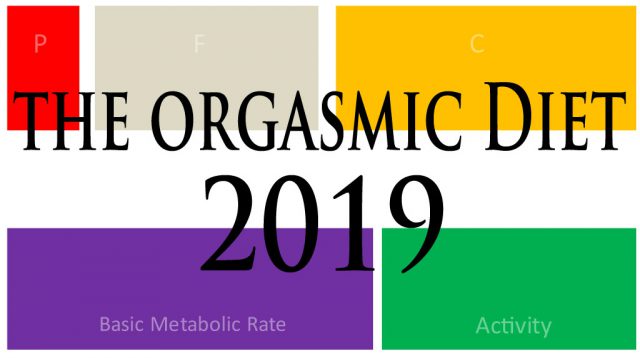
Annual Review 2019
In 2019, “The Flesh x Fresh Diet” was renamed “The Orgasmic Diet” and evolved further. Enhancement of cooked menu like the Orgasmic Curry that combines curry with banana instead of rice (March) decreased the number of raw meat meals hence the annual raw food ratio dropped significantly from 68% in 2018 to 40%.
After we experienced a diarrhea-like symptom when eating a lot of vegetables in curry and other cooked dish, we noticed that the only small amount of vegetables consumption would be enough in a state of eating a lot of fruits like we do in The Orgasmic Diet (in a state of eating almost no grass seeds), so we reduced the intake of vegetables (green leaves).
On the other hand, the food categories that increased in 2019 include eggs and alcohol. Eggs are produced from chickens that feed on grass seeds (grains), so they have a high proportion of polyunsaturated fatty acids and should be treated carefully in The Orgasmic Diet. We incorporate eggs for our gustatory sensation, but we are also very careful not to overeat with monitoring the onset of skin irritation and other alarms from our body.
Alcohol is basically poisonous to human body but it is also said to be “the head of a hundred medicines” and even wild animals enjoy eating fermented fruits and getting drunk in nature. This suggests that consuming a small amount of alcohol with a considerable amount of sugar is within the scope of a natural act. So we decided to incorporate alcohol such as amarula cream into our diet (November). In December, the weight of alcohol grew to over 2% in calories. The appropriate amount is for further study.
As part of our research for the origin of humanity in tropical highlands, we visited Kiyosato, Karuizawa and Kusatsu hot springs to start with, as typical inhabitable highlands in Japan. Along with the literature survey, “volcano” has just come into our view.
This is the summary of the year 2019.
What We Ate
Food Ranking By Calorie
Cheese that had been just incorporated in our diet in 2018 has won the first place in 2019. More than half of our calories came from three foods: cheese, banana and beef.
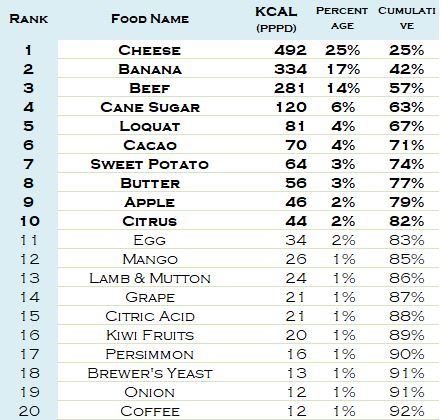
Seasonal Food Change
Herbivore meat and milk products are sources of fat and protein throughout the year. The base of carbohydrates is cane sugar and bananas, and complemented by self-supplied loquat (June), watermelon (September), sweet potato (winter), and market purchased seasonal various fruits. Frozen mangoes saved us as stockpiled food during the typhoon disaster (blackout) in September and October. Egg weights have increased due to the arrival of the souffle omelette boom (July). We started trying to increase the weight of alcohol in November.
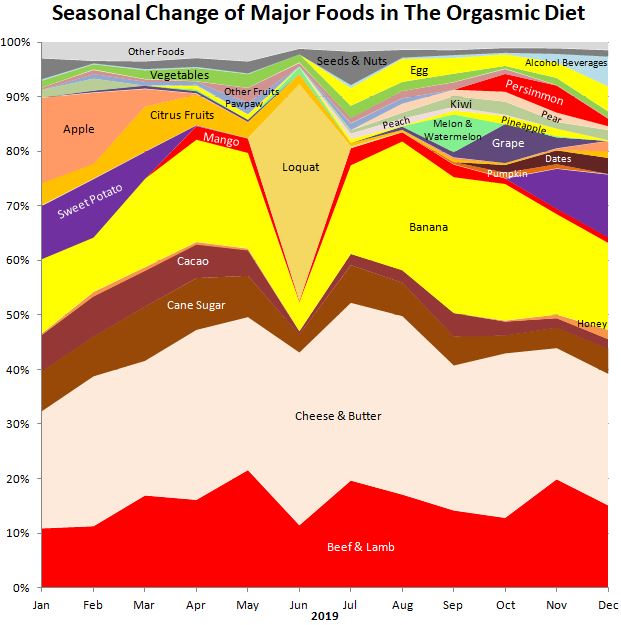
Summary by Food Category
We controlled seeds ratio at 1%. Average daily water intake was 3.6 liters.

Raw food ratio declined due to the enhancement of the cooking menu, and was around 40%. The vegetable garden self-sufficiency rate was high in June when the loquat was harvested, relatively high in September when watermelon harvested and in winter after sweet potatoes harvested, but the year-round ratio was only 11%. We could supply almost all of our vegetables consumption but its caloric values are very small.
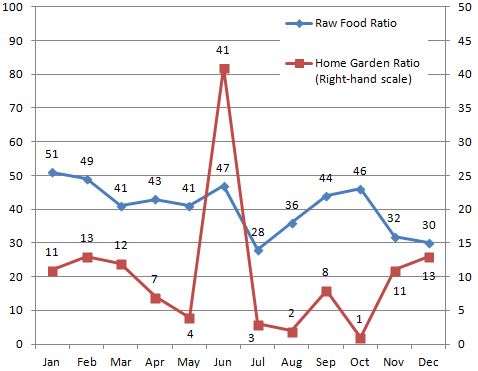
Nutritional Checkup
Let’s see if we could achieve nutritional goals without seeds and fish.
Three Major Nutrients
The annual macronutrient ratio was 47% for carbohydrates, 42% for fat, and 11% for protein. It was higher in fat than the target, but was the natural result of pursuing “orgasmic” meals.
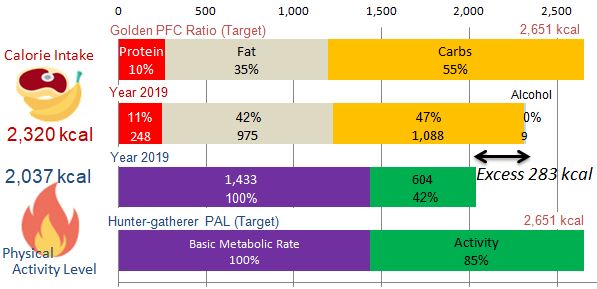
Carbohydrate
The percentage of bananas was lower than the previous year. The top 5 foods (bananas, cane sugar, loquat, sweet potatoes and apples) make up 2/3 of carbohydrate intake.
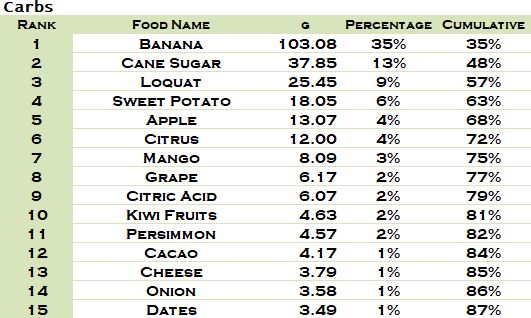
We took dieatry fiber of 28.6g/day against dietary goal of more than 20g.

The main source of fiber were bananas, loquats and cacao, followed by various fruits.
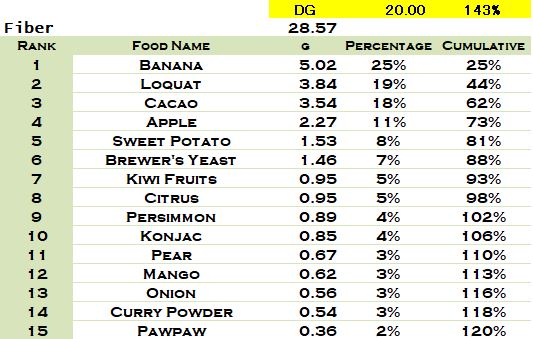
Fat
Our main sources of fat were cheese, beef and cacao. Vegetable oils were almost completely shut out.

Since we have no major foods which contain large amount of PUFA (Poly Unsaturated Fatty Acids), our intake of essential fatty acids were only 1/3 of AI (Adequate Intake). However, we are having no particular deficiency symptoms, the omega-3 and omega-6 ratio being optimal at 1:3.0. We can achieve the optimal ratio with only whole foods, without depending on fish oil supplements or some specific seed oils.
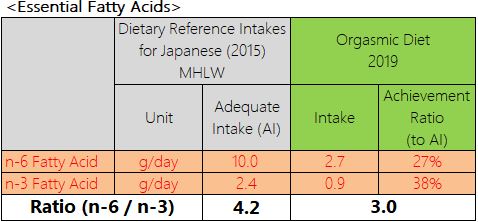
Essential fatty acids were taken from these foods.
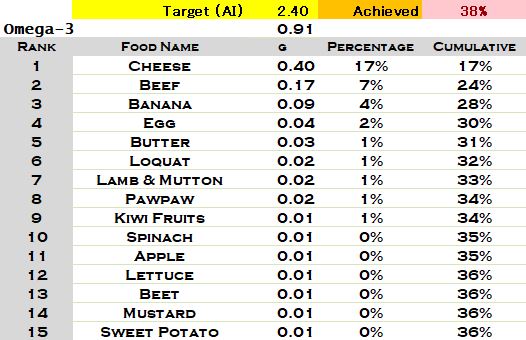
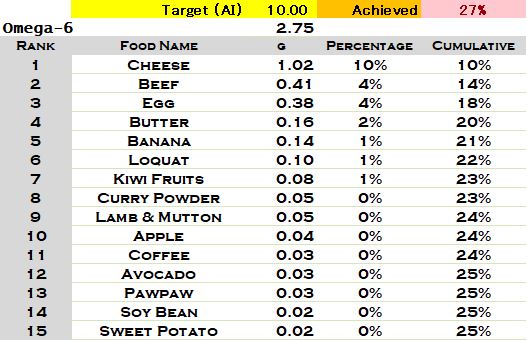
Protein
Our main source of protein were beef, other meats and dairy products besides bananas and cacao provided considerable amounts of protein too.
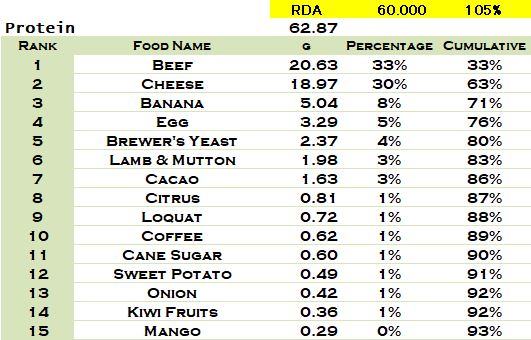
Protein intake was 62.9g/day against recommended amount of 60g. Essential amino acids were obtained in a balanced manner and almost twice as much as recommended by WHO.

Vitamins
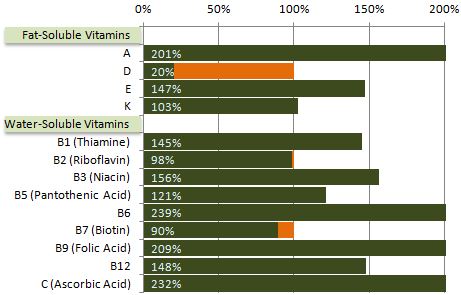
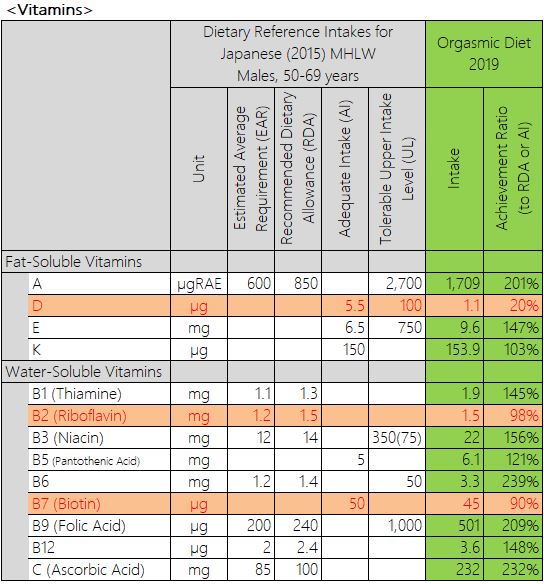
Fat-soluble Vitamins
Except for vitamin D which can be synthesized in our body with sunlight, we consumed required amounts of fat-soluble vitamins. Main food sources of each vitamin were as follows.
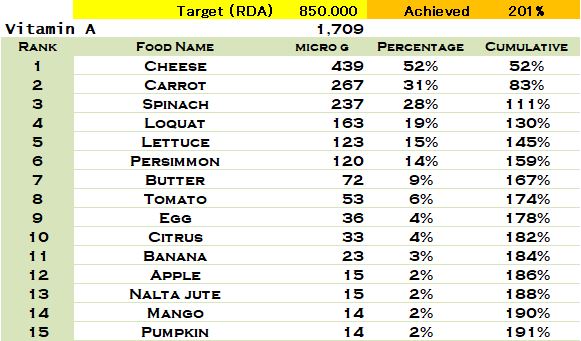
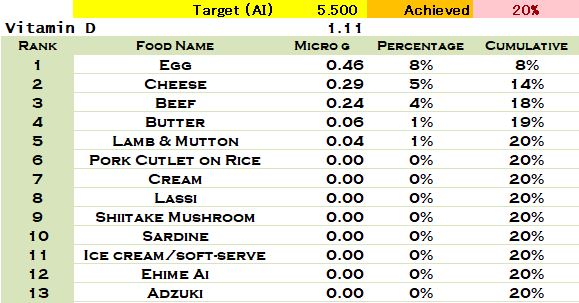
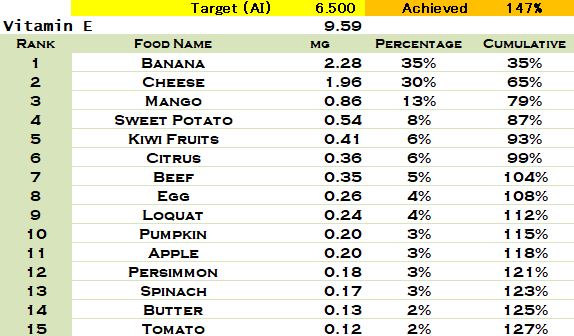
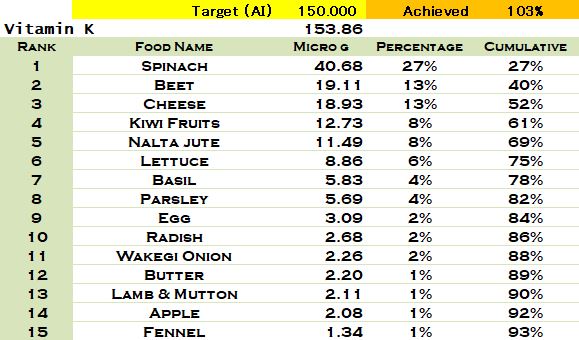
Water-soluble Vitamins
We consumed required amouts of water-soluble vitamins except biotin and vitamin B2 were slightly deficient. Main food sources of each vitamin were as follows.

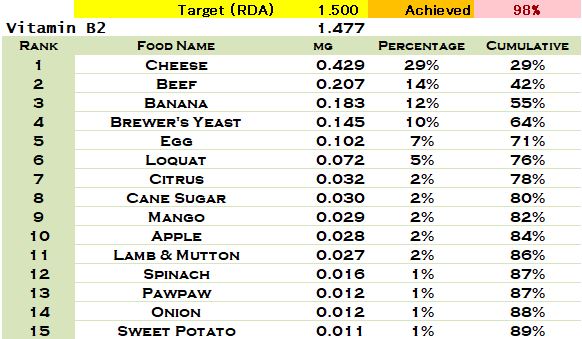
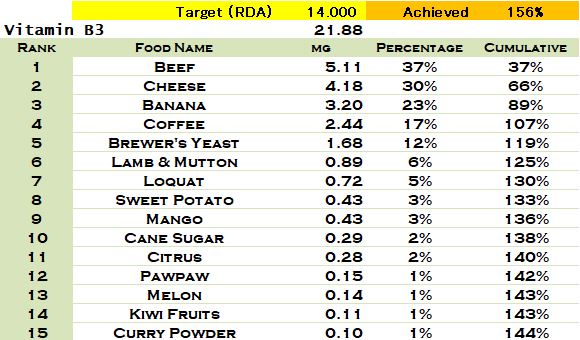
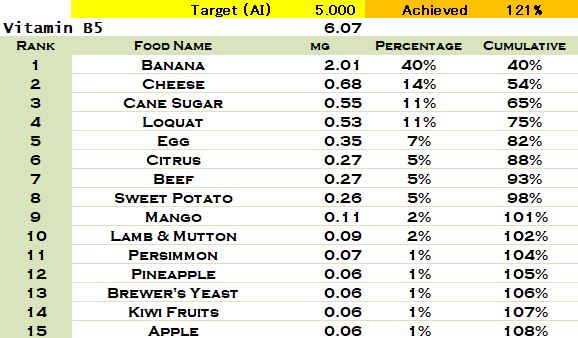
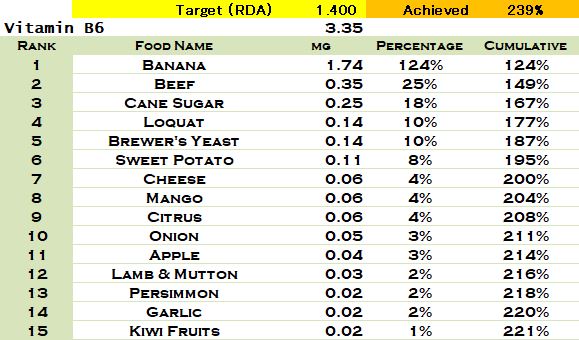
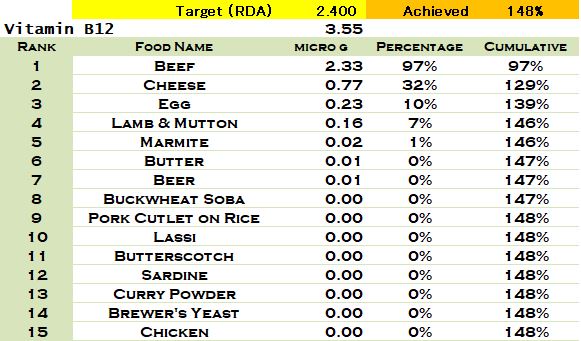
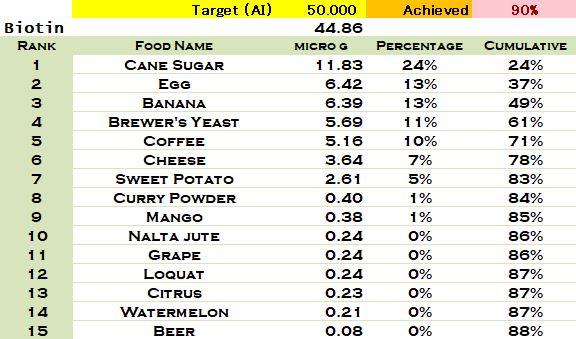
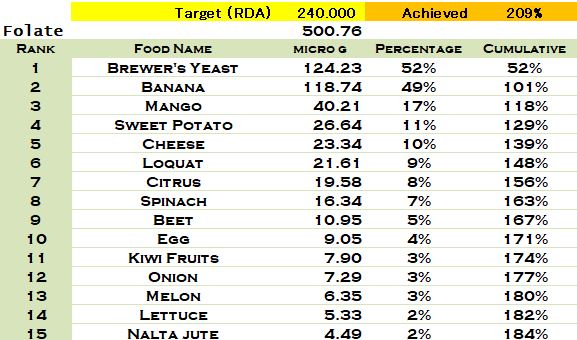
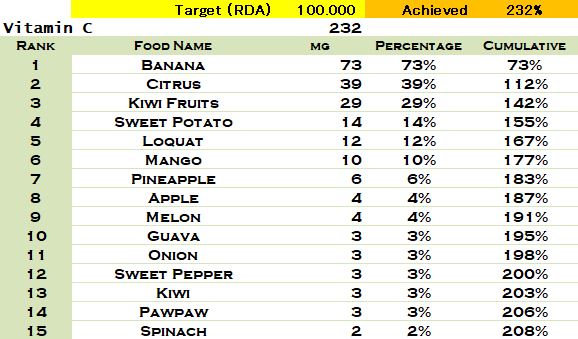
Minerals
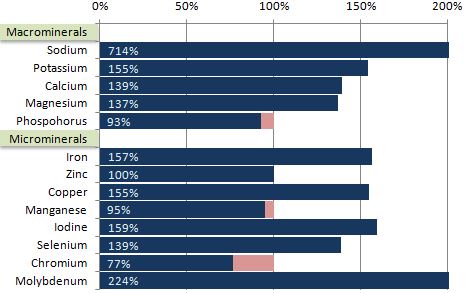
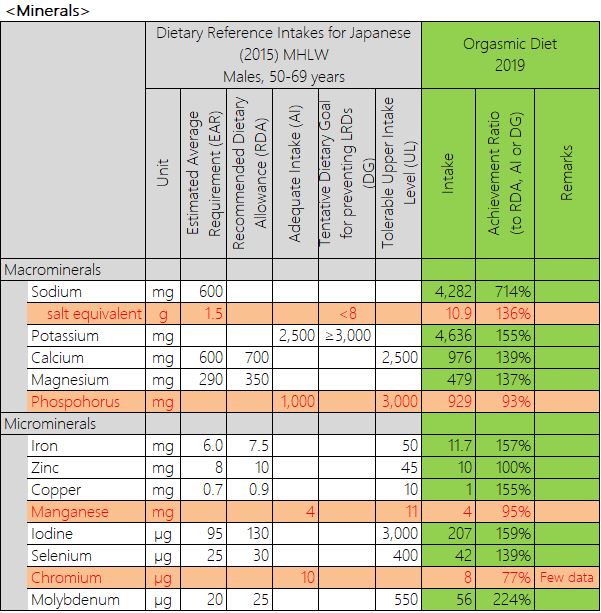
Macro-Mineral
Since calcium intake had tended to be deficient, we added shell fossils powder, later replaced by less expensive calcium carbonate in May, to DEWS. Epsom salt and talc were also added to DEWS to supplement magnesium. As a result, required amounts of macro-minerals were met except phosphorus was slightly below the target. Main food sources of each macro-mineral were as follows.
Sodium intake was 10.9g/day (salt equivalent), exceeding Dietary Goal of less than 8g/day. We don’t think this is a problem because we had plenty of water at the same time and furthermore, our potassium intake was twice the adequate intake recommended by MHLW.
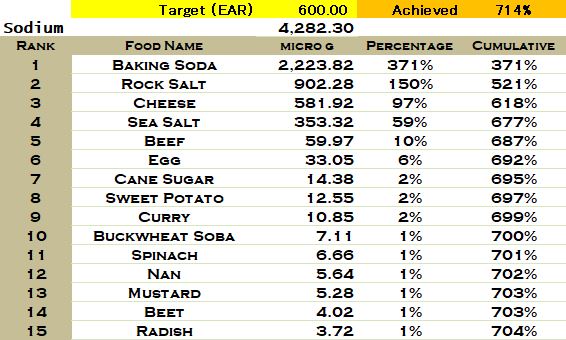
The ratio of sodium and potassium (Na/K) was 0.9. Japanese average of 1.88 indicates we are having a lot of potassium against sodium in The Orgasmic Diet.
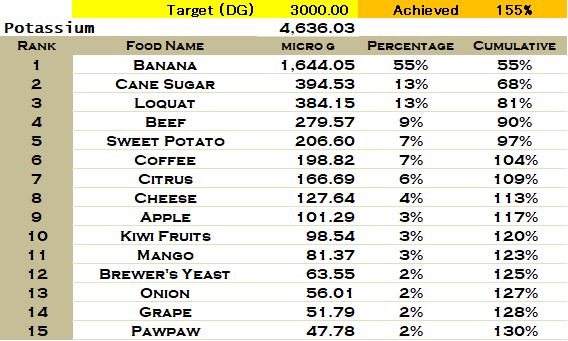
Intake of magnesium and phosphorus should be also considered in proportion to that of calcium. Our Ca/Mg ratio was 2.0 and Ca/P ratio was 1.0. If you are having lots of food additives, intake of phosphorus is likely to be excessive and can disturb calcium absorption. In the Orgasmic Diet, we eat no food additives then need not worry about it.
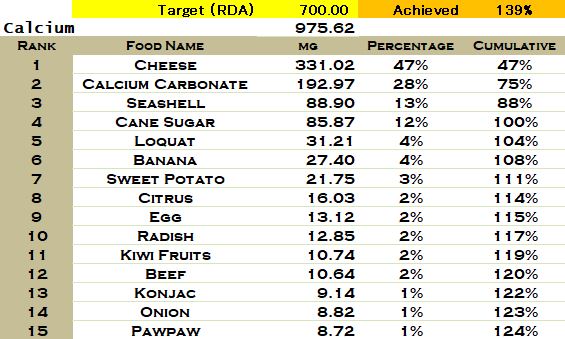
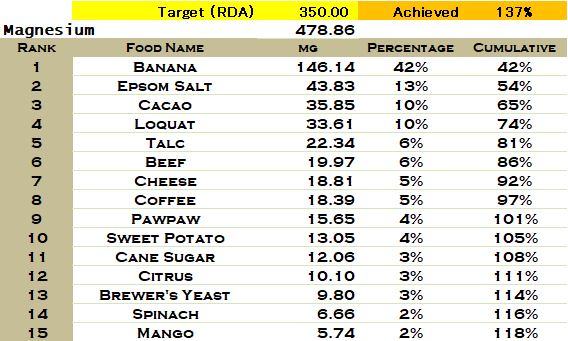
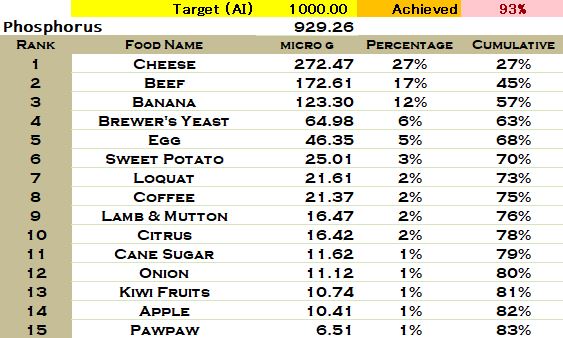
Micro-Minerals
Since zinc and manganese had tended to be in short, we decided to add manganese sulfate and zinc gluconate to DEWS in December. Chromium seems to be slightly lacking, but this is partly because food database doesn’t have enough data for chromium. Main food sources of each micro-mineral were as follows.
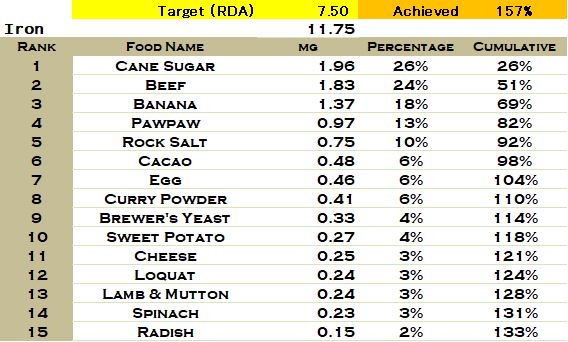
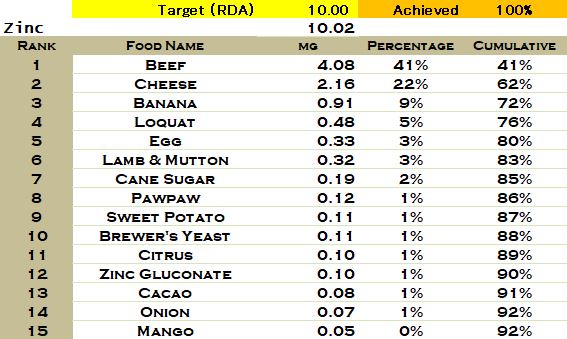
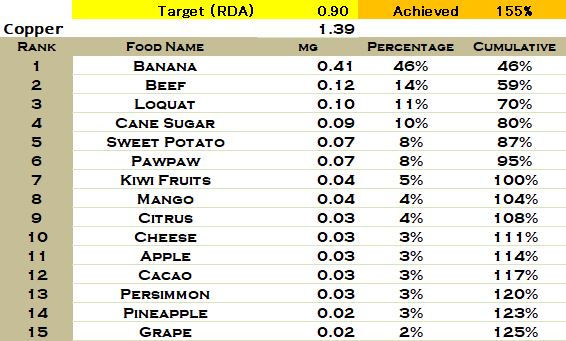
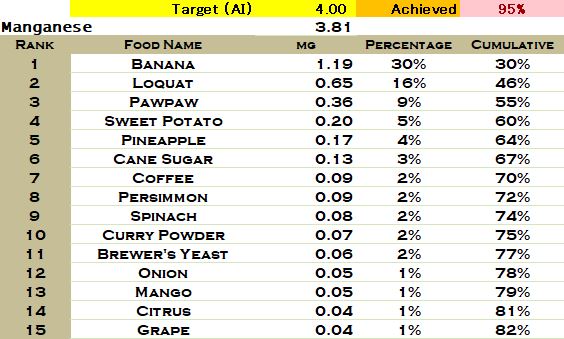
The major foods in The Orgasmic Diet don’t contain enough iodine to meet RDA. Though we are not sure if this RDA is really adequate, we added kombu powder to Cocto-X just to be on the safe side.
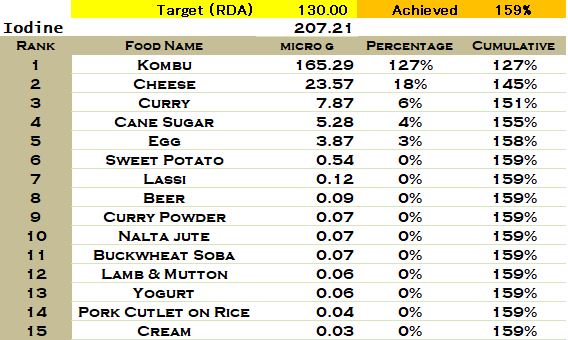

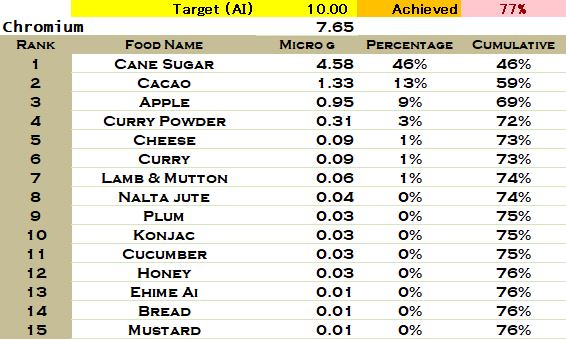
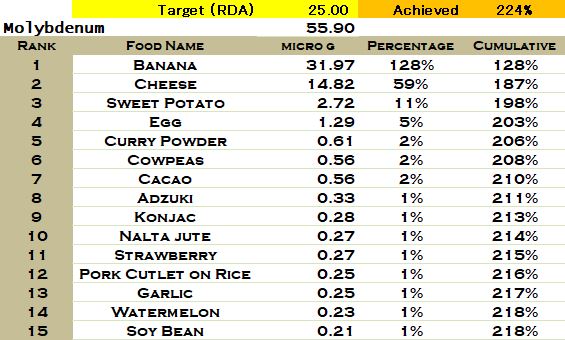
Caloric Balance and Weight
Caloric Balance (kcal/day) and Macronutrient Ratio

My activity level of 2019 was 42% of basic metabolic rate while my goal was hunter-gatherers’ that of 85%, resulting in 283kcal/day of excess intake.
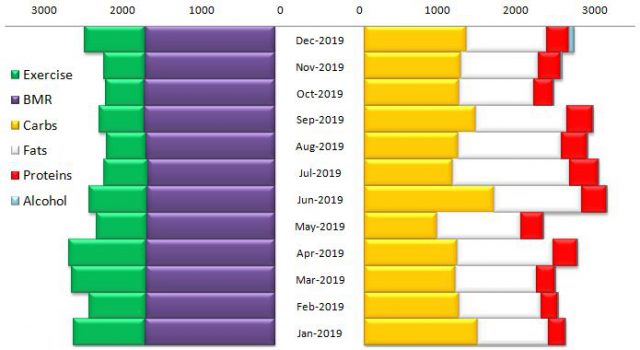
Weight Trend
Every time we traveled, we overate grass seeds to gain weight, and then returned to Jitaku Resort to lose that overweight gradually. While all of this was going on, the BMI range of 23 to 25, which is thought to be optimal for health and longevity, was almost satisfied.
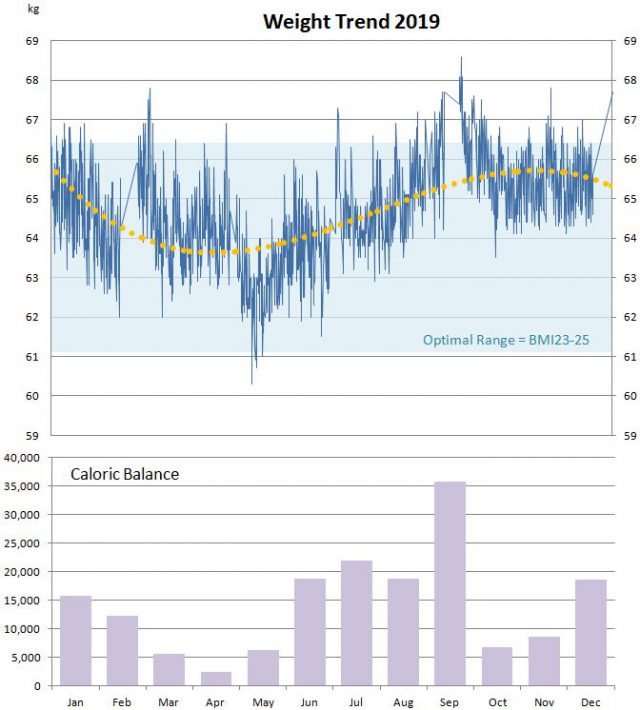
Food Cost
Our food cost for 2019, 329 days excluding days we were away from our Jitaku resort, was 854 yen per person per day. It was lower than average Japanese two people household food cost (1,075 yen PPPD).
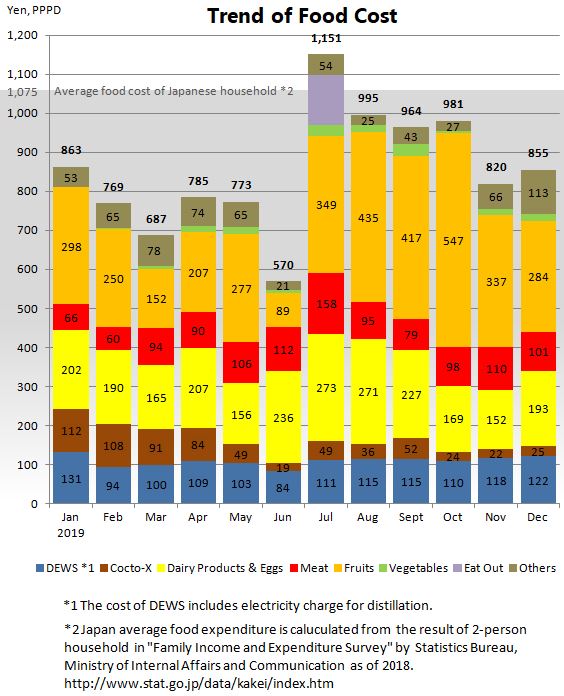
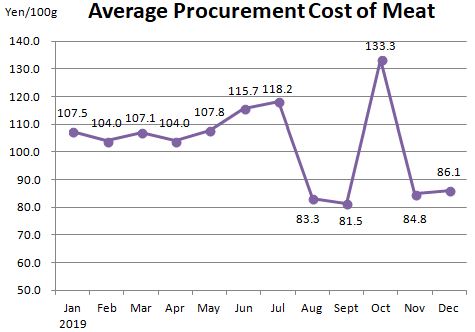
This post is also available in 日本語.
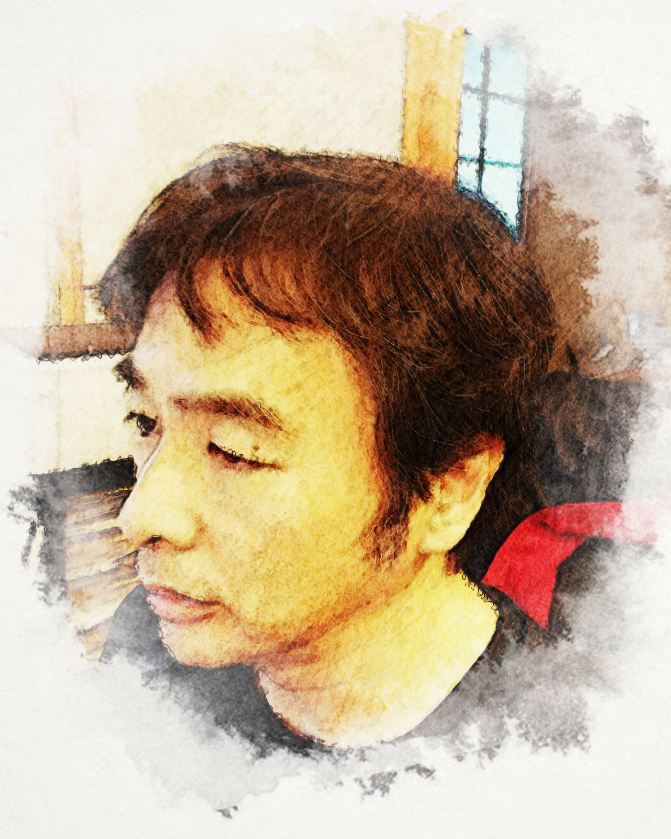
Born 1967, Hiroshima, Japan.
In 2009, I made up my mind to eliminate any and all of GMO(genetically-modified organisms) from my life, leading to whole grains vegan diet, and further into low-fat-raw-vegan (the 80/10/10) diet. Finally in 2017, I found just stop eating “seeds” can make us healthy. I named the set of my idea “The Orgasmic Diet.”
My dream is to live in tropical, high-elevation place, probably somewhere in Colombia, with cows and fruit trees.
********************************************************************
If everyone makes oneself happy, everyone becomes happy.
With the miracle of the Orgasmic Diet, you'd be fit and healthy
if you eat ONLY what you like AS MUCH AS you like.
Why don't you join the Orgasmic Diet now!
********************************************************************
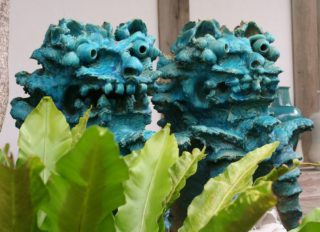
 English
English 日本語
日本語